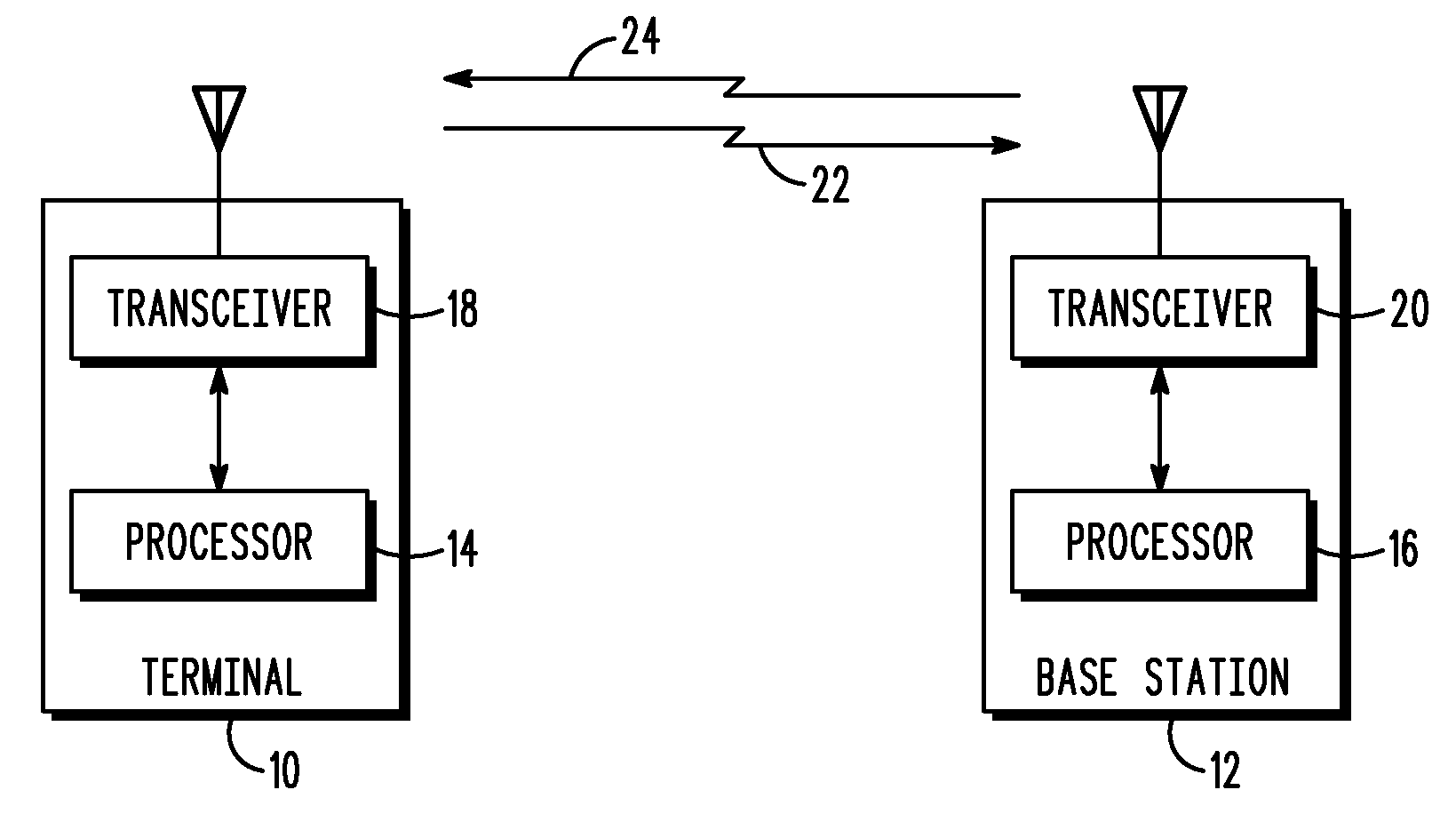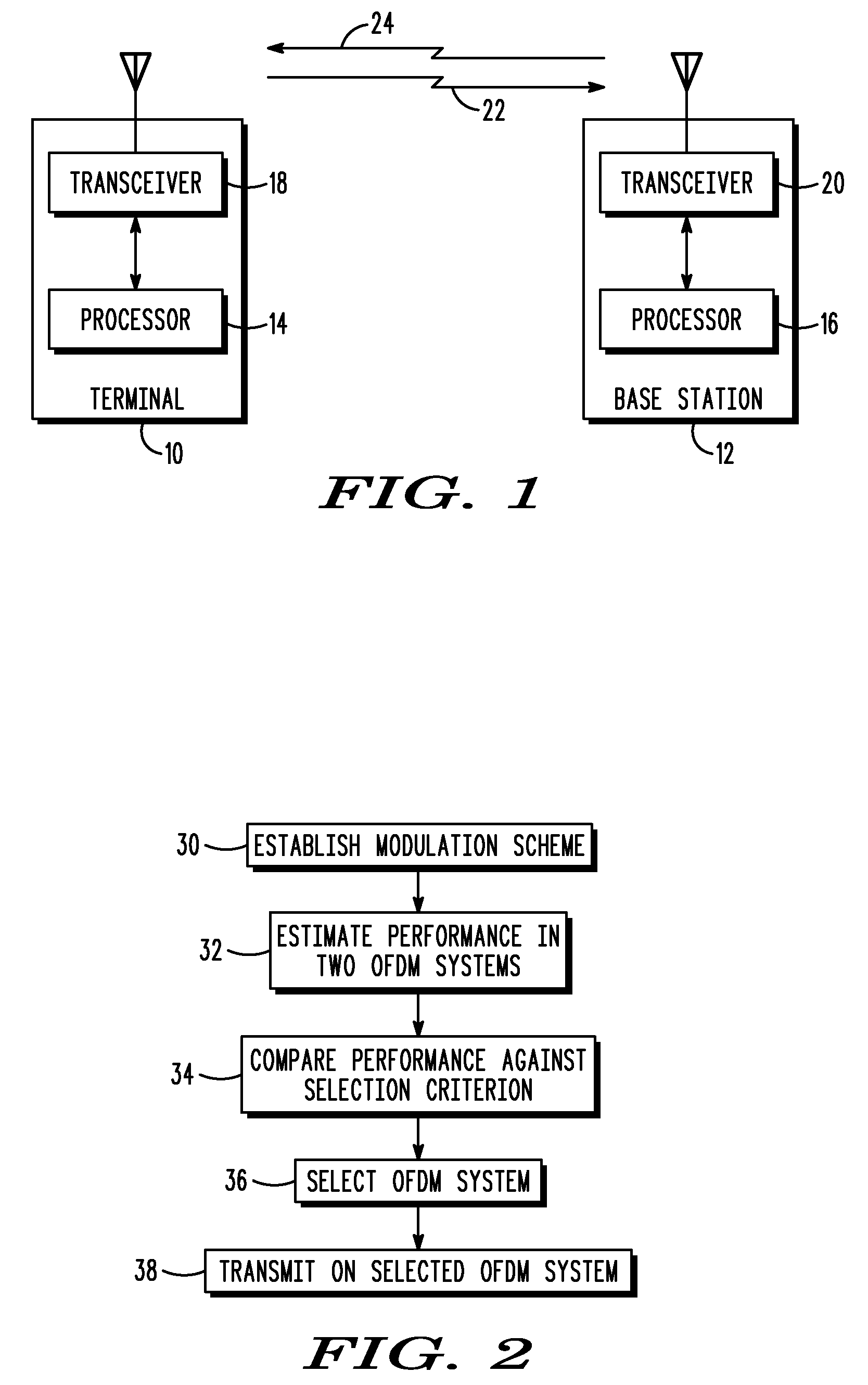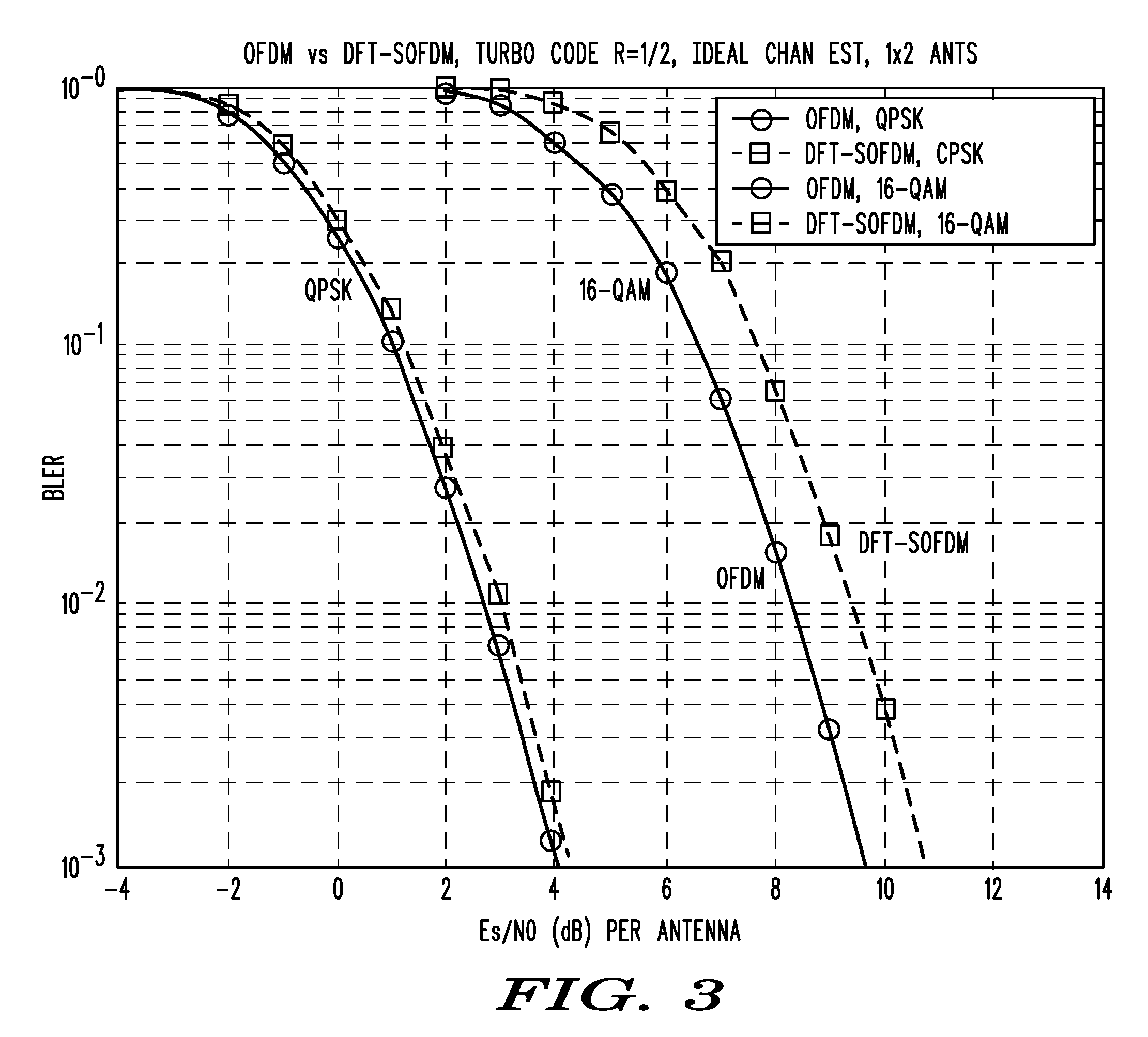Method and apparatus for switching between OFDM communication modes
- Summary
- Abstract
- Description
- Claims
- Application Information
AI Technical Summary
Benefits of technology
Problems solved by technology
Method used
Image
Examples
first embodiment
[0018]In a first embodiment, a terminal 10 is operable to switch between a first and a second Orthogonal Frequency Division Multiplexing (OFDM) communication mode. The terminal includes a transceiver 18 operable to use a modulation scheme and a processor 14. The processor 14 is operable to; estimate a first performance factor for the modulation scheme in the first communication mode and a second performance factor for the modulation scheme in the second communication mode, comparing the first and second performance factors against at least one selection criterion; and select the communication mode in response to the selection criterion and the modulation scheme, wherein the transceiver communicates with a base station to switch to the selected communication mode and transmits on a reverse link of the selected communication mode using the modulation scheme.
second embodiment
[0019]In a second embodiment, a base station 12 is operable to switch between a first and a second Orthogonal Frequency Division Multiplexing (OFDM) communication mode. The base station 12 includes a transceiver20 operable to use a modulation scheme and a processor 16. The processor 16 is operable to; estimate a first performance factor for the modulation scheme in the first communication mode and a second performance factor for the modulation scheme in the second communication mode, comparing the first and second performance factors against at least one selection criterion; and select the communication mode in response to the selection criterion and the modulation scheme, wherein the transceiver communicates with a terminal to switch to the selected communication mode and transmit on a reverse link of the selected communication mode using the modulation scheme.
[0020]In practice, transmitted information can be spread across many frequency subcarriers, requiring a pilot tone to be ge...
PUM
 Login to View More
Login to View More Abstract
Description
Claims
Application Information
 Login to View More
Login to View More - R&D
- Intellectual Property
- Life Sciences
- Materials
- Tech Scout
- Unparalleled Data Quality
- Higher Quality Content
- 60% Fewer Hallucinations
Browse by: Latest US Patents, China's latest patents, Technical Efficacy Thesaurus, Application Domain, Technology Topic, Popular Technical Reports.
© 2025 PatSnap. All rights reserved.Legal|Privacy policy|Modern Slavery Act Transparency Statement|Sitemap|About US| Contact US: help@patsnap.com



